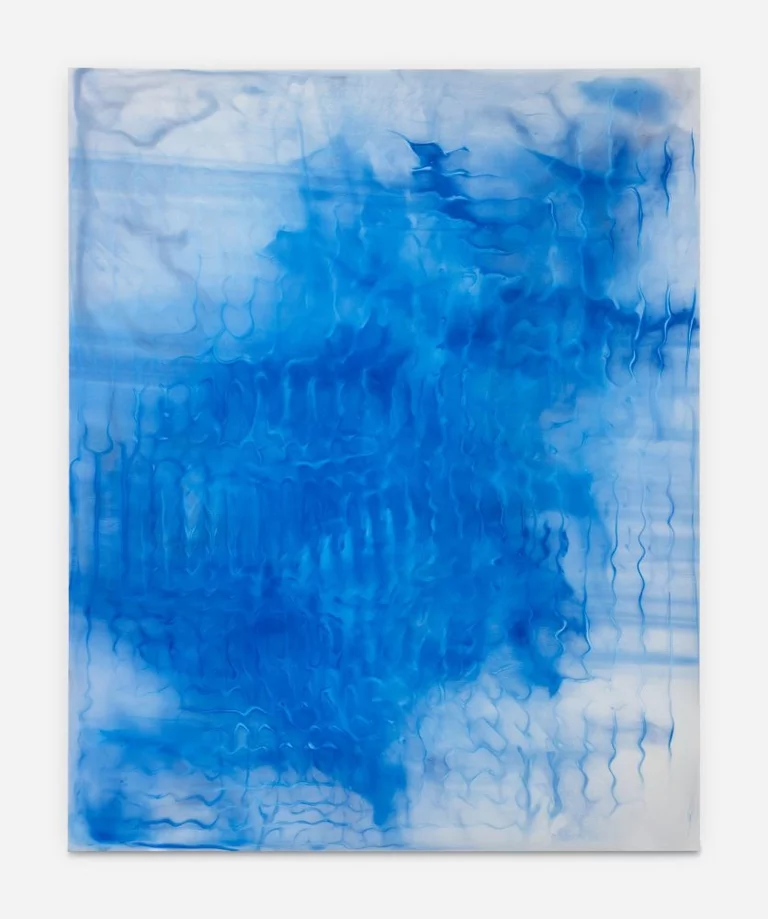OLIVER BEER: RESONANCE PAITINGS - CAT ORCHESTA
Almine Rech New York, Tribeca is pleased to announces Resonance Paintings – Cat Orchestra, Oliver Beer's second solo exhibition with the gallery.
March 14 – April 27, 2024
Oliver Beer’s work shows us that if we listen carefully, we can hear them. He’s been listening for as long as he can remember, since the days he would modulate his own voice to match the harmonic pitch of his childhood bedroom. Every room – indeed, every vessel – has such a note, known as a Helmholtz resonance, and for several years the artist, who trained as a musician before studying fine art at the Ruskin School of Art, Oxford, has been trying to tune them.
For “Cat Orchestra,” Beer has tuned an entire band. A chorus of cat-shaped vases, ranging from the classical to the kitsch, are connected to live microphones that feed to a custom-built keyboard and synthesizer. Each key, when played, activates the microphone in the vessel whose resonance corresponds to that note, so that a fin-de-siecle French absinthe pitcher in the form of a cat playing a mandolin sings an F sharp, and a Japanese Maneki-neko sings a D. With this, Beer has achieved the dream of Athanasius Kircher, the 17th century occult philosopher who first imagined the cat organ, or “Katzenklavier.”
Each painting vibrates with an almost tragic stillness—a feeling that the artist likens to a muffled scream. In October 7: Heading Home, for example, a smartly dressed woman, poised to go explore wherever she is visiting, is instead frozen in place with her eyes glued to the television as it emanates that classic blue glow, projecting a real-time, real-world horror right as she attempts to remove herself from the realities of life through this vacation. Although we do not see what is unfolding, we understand its darkness through the stiffness of her body.
An organ must be played, but orchestras can only be conducted. Beer amplifies the acoustics, but the sounds are already there. “Cat Orchestra” continues an inquiry Beer began at the Metropolitan Museum of Art in 2019, when he used similar engineering to amplify the ambient tones of historical vessels from the museum’s collection.
He created the “Resonance Paintings” on view in this exhibition by casting powdered pigment onto a canvas laid flat over an amplifier, on which distortions of the cats’ voices are played. Their abstract, lyrical forms are made by the careful manipulation of sound waves and musical harmonies alone. These singular works, perhaps the first in history to be painted by an invisible hand, are a demonstration of the science of cymatics, discovered in 1680 by Robert Hook, a near-contemporary of Kircher’s, who was also first to observe bacteria beneath a microscope.
Kirchner was a famed alchemist, and in a way, so is Beer. Both transform cosmic energy into physical matter. Every atom in your body vibrates in synchrony with music, but only the bone in your ear translates it into the electrical current that reaches your brain. Beer’s work invites both our eyes and our ears to perform the same translation, and in the process come closer to grasping the ineffable. It’s the principle underlying string theory and countless faiths. A feline beat, if you will. According to O’Malley, “Everything else is obsolete.”


